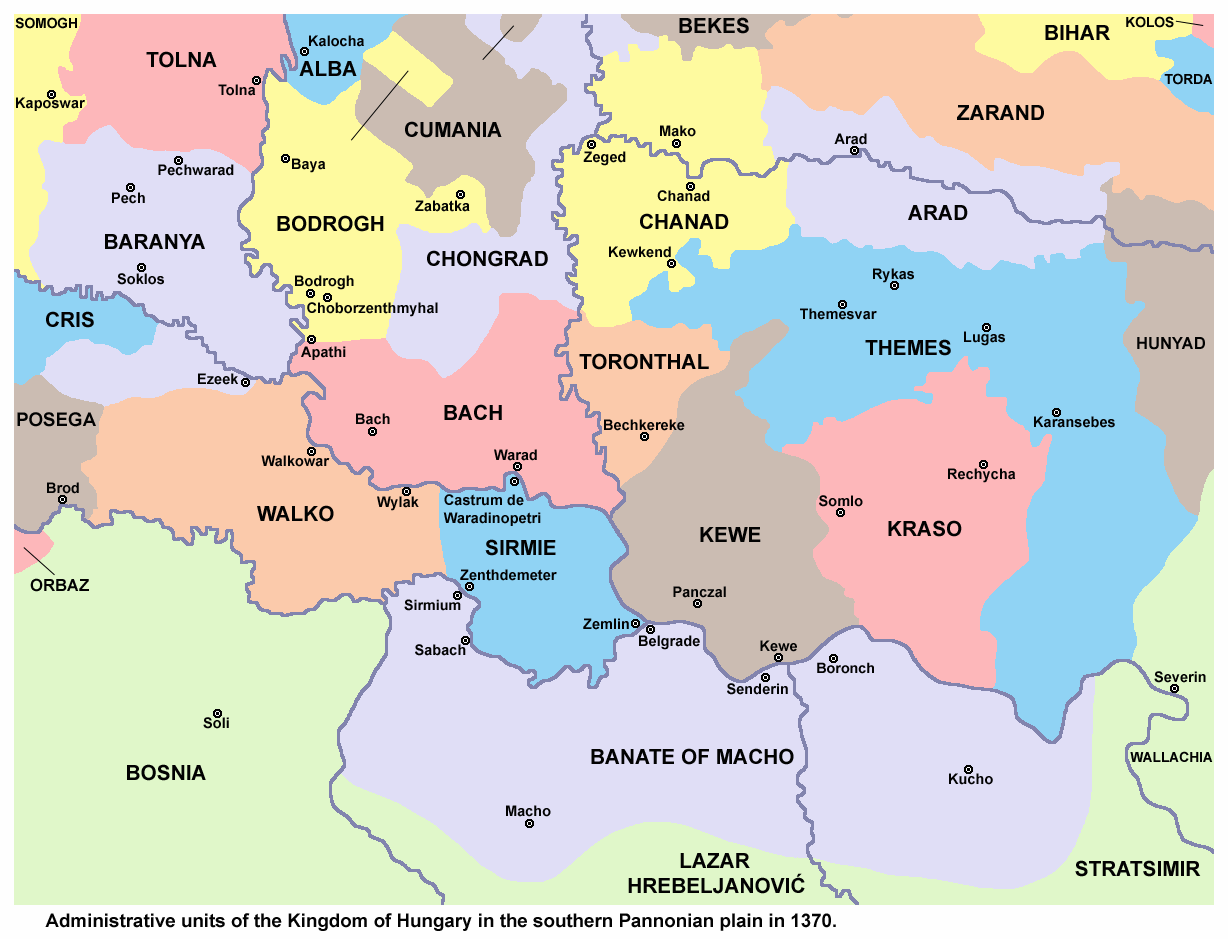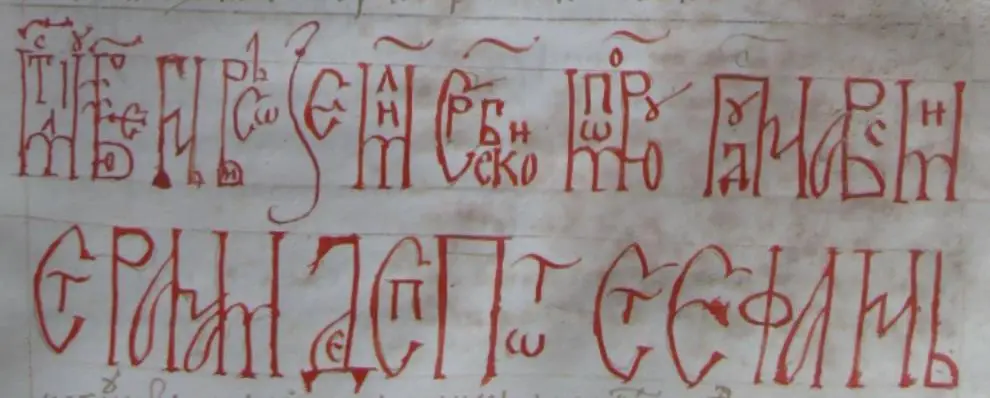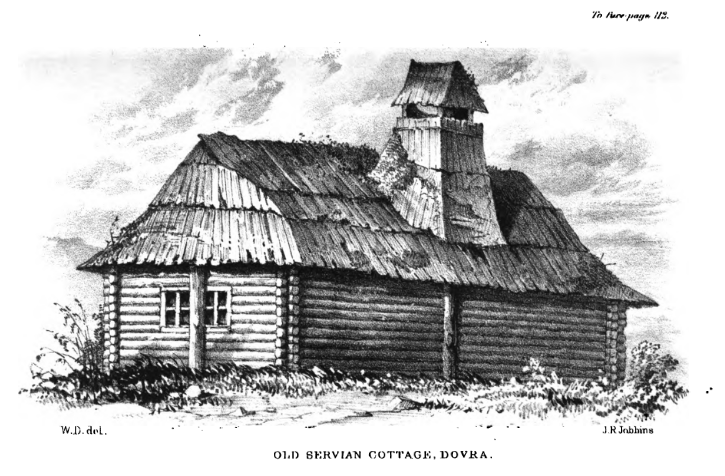Section of Epidemiology and State Medicine.
President—Dr. G. S. BUCHANAN.
A Pandemic of Typhus in Serbia in 1914 and 1915. ;
By V. Subotić
(Surgeon-Colonel, Serbian Army.)

Surgeon-Colonel Vojislav Subotić
Work by photo atelieu Merčeo and Savić
Added to this text by Books of Jeremiah
Typhus, like relapsing fever, was formerly entirely unknown in Serbia. It was during the winter 1912-13 that detachments of the Serbian Army crossed Albania as far as the sea, reaching Durazzo; others came by way of St. Jean of Medua and Alessio to take part in the fighting around Scutari. This expedition through the arid mountains of Albania, which no army had crossed up to that time, in a wild country entirely devoid of resources, was extremely difficult. The Serbian soldiers, who are pretty hardened as regards privations and fatigues of every description, have always said that the Albanian expedition was one of the most difficult tasks they had to carry out. It took place in the depth of winter, which in those parts is very severe, and there was no habitation to serve as a shelter for the soldiers, who were often forced by the cold and wind to take refuge in miserable huts and caverns amid swarms of Albanian lice.
The pathology of Albania was at that time entirely unknown, I will add that here we made acquaintance, not only with typhus and relapsing fever, but also with Malta fever, though of this but a few rare cases occurred.
It was among the soldiers of this expedition that the first cases appeared, and they were much more numerous than in the other units. Fatal cases were not very long in making their appearance. At first they were put down to fatigue, exhaustion and privations, but it was soon perceived that it was a question of a disease with well defined characteristics, and that we were confronted with an enemy which had until then been unknown in our country. It was relapsing fever and typhus, two diseases endemic in Albania.
The inroad made by these fevers, however, was not excessive; the number of doctors who had been able to gain acquaintance with them had been comparatively small. When the summer came the diseases disappeared. In 1913, in our war against the Bulgars, moreover, the Bulgarian Army had brought us cholera, and we were overhasty in ceasing to be anxious about typhus, which indeed had not yet put forth all its terrible power.
The summer of 1914 marked the outbreak of war with Austria-Hungary. We had to repel the first invasion in the summer, then a second in November, 1914. As the enemy at the time of the first invasion had manifested great cruelty towards the civilian population, at the time of the second invasion a great exodus of the population took place from the invaded to the uninvaded regions. Between 250,000 and 300,000 people thus left their homes in flight before the enemy.
Typhus was then raging in the Austro-Hungarian Army, which at that time invaded our country. After the Austrians’ retreat, our armies reoccupied the invaded countries and found themselves confronted above all at Valjevo which had been the Austrian headquarters, with deplorable sanitary conditions, and at the same time with a large number of enemy sick and wounded. The number of Austro-Hungarian prisoners was likewise considerable, amounting to nearly 60,000 men. The movement of troops, the civilian population, refugees, war prisoners, and wounded, was very great. The roads were congested, the railways overloaded, and the means of transport for all the wounded and sick were, therefore, far from being sufficient. Buildings to accommodate all these people were wanting, and the task of sheltering them all was beyond our power. It must be added that at that time rain only stopped to give place to snow.
At the same time the recruits from the borders of Albania arrived. It was then (in December, 1914), that there began to appear and to multiply in the army, among the civilian population, in the hospitals, and above all among the prisoners of war, cases of illness which puzzled the doctors, who were overwhelmed with work owing to the number of sick and wounded. Some of them were called upon to attend to 500 to 600 patients and more. They spoke of a very grave form of influenza which took quite an unusual course, of a new disease — something doctors; having found the spirilla, asserted that it was relapsing fever. Others said that it was typhus. They were both right. There were two original foci of infection, the principal one in the north, at Valjevo, a region which had been occupied by the Austro-Hungarians, and the other, less important, in the southern departments, to which infection had come from Albania. These foci soon become merged in one another, and in the month of January, 1915, the whole of the Serbian country was flooded with typhus and relapsing fever. This epidemic raged during the months of January, February and March in full force. In April it began to die down, and it ceased in the month of June. In the army and among the war prisoners there were about 150,000 sick with the disease, of whom about 30,000 died. Doctors in particular were the sufferers. Out of 350 Serbian doctors 126 succumbed to typhus, the death-rate among them being as high as 36 per cent.
Concurrently with typhus relapsing fever pursued its course, though with a much lower death-rate. In some cases in which both fevers seemed to run their course at the same time the morbidity was very high, and the death-rate ranged in the case of typhus from 20 to 80 per cent. Those who succumbed were chiefly old men, debilitated subjects, sufferers from cardiac or renal diseases, and prisoners of war. Children were particularly immune.
As regards the propagation of the disease, I repeat there were not nearly sufficient hospitals for isolating and even for suitably sheltering the sufferers, who were short of space, air, and every comfort. There were not enough doctors and nurses, and day by day their number declined. In a military hospital where some of my surgical duties were carried out — a hospital which in peace time had beds for only 400 patients — there were at one time 1,600, more than 1,000 of them suffering from typhus. Out of a staff of forty-two doctors, dispensers, auxiliary doctors, dressers and nurses there remained only three free from infection. There was no room and no air, and the saying of our forefathers that typhus is the disease of destitution and poverty was fully justified.
Inspired by the work of M. Nicolle, we began by combating the lice which indeed swarmed ; but here difficulties were encountered. In the first place the lice swarmed to such an extent that they were met with almost everywhere. Then again we often met men who were unable to understand the important part played by these parasites in the propagation of typhus.
The difficulties in the way of ridding the army of the lice pest during the winter were very great in view of the number of the parasites and the very few means available for attacking them. We therefore set about enlightening the population as to the danger of lice, above all in times of epidemic prevalence of typhus.
Care was taken to adopt precautions on the railways; all upholstered carriages and cushioned seats were done away with and replaced by perfectly plain carriages with wooden seats, which could be easily washed and disinfected after each journey. The number of passenger trains and traveling permits was reduced. Trains were formed of cars designed as steam disinfecting stoves, shower bath and bath cars. These trains were run along the railway, and the troops were taken to the stations, where the soldiers were able to take baths while their clothing was disinfected. These measures were attended with obvious success. In the towns examination and cleansing of hackney carriages was ordered. Hotels and cafés were subjected to a more rigorous sanitary inspection. The opening of public places all day was prohibited; they were to remain closed two to three hours a day in order to be cleansed. Above all instructions were given that the floors were to be coated daily with petroleum.
In order to rid the army of lice, makeshift installations had to be resorted to, as modern appliances were not available. Hot-air ovens were arranged on quite a primitive system by digging holes on slopes. In these ovens fires were lit to heat the walls, and the opening was then closed by means of a double bottom wooden cover. To make sure that the heat inside was not too great, in default of a thermometer a piece of white paper was taken and inserted in the cavity, and was left there for some time. If it became yellow (burnt) the degree of heat was too high and it was necessary to wait a little. Finally, experience having been rapidly gained, we succeeded in producing the degree of heat necessary to kill the lice and and the nits without injuring the clothes, which were placed in the oven resting lightly on a wooden grating. It need hardly be said that the hot coal was first taken out of the oven and placed in front of the furnace to catch the lice which might fall from the clothes. The persons working at these furnaces were warned to guard themselves carefully against the lice, because the lice, though remaining motionless during the cold, began to be lively as soon as they approached any source of heat.
The difficulty was to wash the undressed men and safeguard them against the cold whilst their clothing was in the ovens, for these men had no spare clothes and it was mid-winter, often far from any shelter. Whenever, however, there was an energetic man in command imbued with the importance of his task, he succeeded in utilizing all available means to rid his men of the parasite. Mostly it was done by multiplying the number of ovens; there was sometimes one or there were even two for each company.
In the towns, in the ambulances and the hospitals, different rough installations were made for the destruction of lice and nits by hot air, and at the same time for heating the water, because most of the steam disinfectors were more or less damaged, and there were no competent workmen to repair them. We were short of linen, of well-fitted wash-houses, and of plant for drying the linen.
Later on, simple rough appliances were also built by Colonel Hunter, by which steam disinfection could be done. On a round metal water tank, heated below, a barrel was placed with its bottom removed, of the same size and shape as the tank. At the bottom of this barrel was a grating, and in the cover, which was well fitted, supports were fixed to hook on the clothing. The cover was kept down with a few stones. To prevent the steam escaping, between the tank and the barrel a large circular hose made of strong canvas was placed, filled with coarse sand, and on this ring the barrel rested. This simple method allows whole of the steam being directed from the tank into the interior of the cask, where it reaches a degree of heat and pressure fully sufficient to kill both lice and nits in a short time, When the pressure becomes too great the steam lifts the cover like a safety valve. The articles on being taken out of the apparatus, however, are slightly wet and those of leather are often damaged.

Schematic of the “Serbian Barrel” by Colonel Doctor William Hunter in Serbian. Foto: Wikipedia/Ziva73
Added to this text by Books of Jeremiah

Serbian barrels in the field. Foto: Wikipedia/Ziva73
Added to this text by Books of Jeremiah
It seems to me that for destroying the lice (not for disinfection of soldiers’ clothing) circulating hot air appliances, of which there are several designs, are preferable, particularly when they are so constructed that the temperature inside can be graduated and measured; at the same time they may serve for drying the linen.
For sick wards sulphur fumigation has been used with generally satisfactory results. As a preventive against insects recourse was had with some success to camphorated naphthalene powder, camphorated oil, and spraying petroleum or formol on the clothing.
To kill the lice the spraying of formol and benzine acts very quickly ; insecticidal powder is insufficient, it stupefies them but they recover. Infusion of tobacco leaves also fails to kill them. We used all these means to combat typhus. Colleagues and missions, particularly from England, France, Russia, and the United States, soon came to our aid, and owing to their excellent training, and above all their devotion, greatly contributed to combating and suppressing typhus. Unfortunately they too were not spared by the disease, many of them were attacked, and some died.
A patient suffering from typhus is said not to constitute any danger to his environment when there are no lice present. This opinion, put forward by persons who know the disease well, seems to me correct, especially when the patient is under good hygienic conditions, and I was able to verify it myself in a fairly large number of eases. Such a patient is not in the least dangerous to his doctor and his nurse. This applies to well-equipped hospitals, especially those not over-crowded. But a doctor who has to work amid an environment over-crowded with typhus patients where there are lice is particularly exposed to infection ; he will do well not to neglect any precaution in his defence.
Having worked for several months in a hospital which was of necessity under entirely unfavourable conditions, and where almost all the doctors and nurses had been attacked by typhus, I took special interest in this question of individual prophylaxis. It need hardly be said that baths and changes of linen and clothing are of importance. For visiting patients with whom contact is unavoidable, it is desirable to make use of a suitable dress. A blouse or overall, fitting tightly at the neck and wrists, where a band of cotton wool sprinkled with camphorated naphthalene powder and sprayed with formol or petroleum can be placed, will be useful. With regard to the colour of the overall, I think that black should be preferred; in the first place the lice are more readily detected on a black background. On the other hand, I have also tried the effect on the lice of pieces of material of different colours; they generally preferred to seek shelter in bluish grey material (the colour of the Austrian uniform) and khaki, while they seemed to me to avoid black. In order not to pick up lice the overall must not be too long. It is useful to wear top boots when on this kind of duty. Some of our doctors also wore hoods and masks attached to the overall as used in certain plague hospitals. It is a good thing to wear rubber gloves. Though personally I did not contract typhus, and was never bitten by a louse, I know of cases where very competent colleagues who had neglected nothing, and who had asserted that they had never been bitten, fell ill with typhus. One who was thoroughly a well acquainted with this disease, an excellent bacteriologist and a great partisan of Nicolle’s views, who was the chief physician of a typhus section and asserted he had never been bitten by a louse, was also attacked by typhus and died.
A number of our doctors are of opinion that the biting louse is the chief transmitting agent of typhus, but that it is not the only one. I am not aware that it is possible to be bitten by a louse without perceiving it. Generally people say that they feel it quite distinctly, and I have even known colleagues who when this happened immediately injected 2.5 per cent carbolized water at the point of the bites hoping thus to neutralize the virus. Or perhaps it may be through inhaling the detritus of the excrements or particles of the body of the lice, or by their introduction under the skin by friction that the infection may also arise.
I was surprised by the large number of cases of typhus with surgical complications. l saw 130 cases of parotitis, which in the majority of cases was severe, suppurative, and even gangrenous; I have seen patients die from it. Possibly the want of care of the mouth may play some part in its causation. In 124 cases I saw gangrene of the toes, the foot and the leg. In one case only was there gangrene of the penis; sometimes there was partial gangrene of the external ear. In one instance only had I to treat secondary hemorrhage in consequence of a traumatic aneurysm of the femoral artery in a patient on the eight day, who fortunately recovered.


Doctor Colonel William Hunter, CB FRSE 2018 Serbian stamp with Dr William Hunter
Added to this text by Books of Jeremiah



